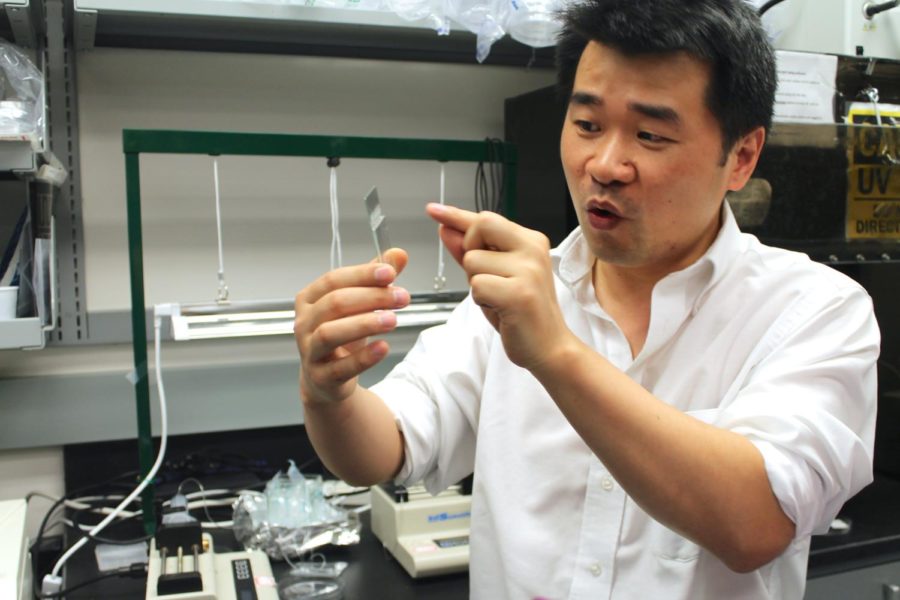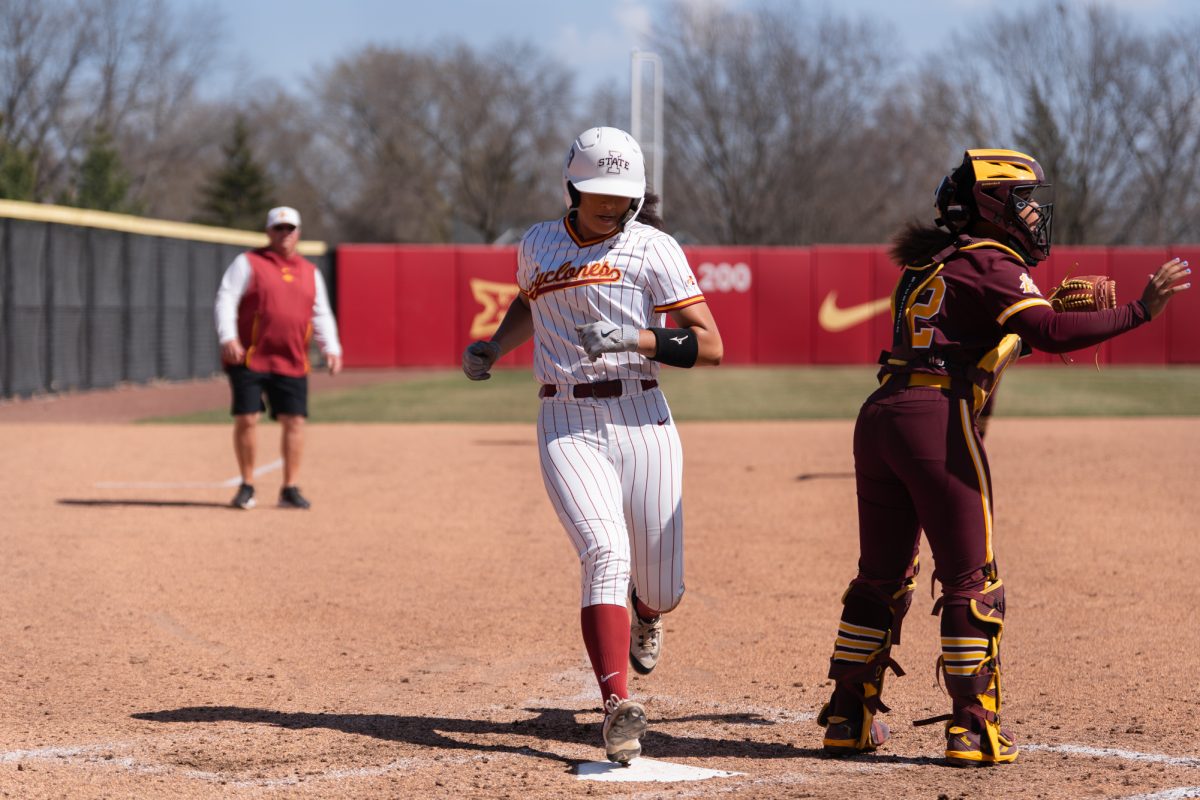ISU professor develops growth tool
Richard Martinez / Iowa State Daily
Liang Dong, associate professor of electrical and computer engineering, presents the mold for an underground device that can collect real time data on soil conditions and plant genomes using electronic microchips. Dong aims to employ this technology for large scale purposes, such as monitoring crop plant growth, explaining that the method to manufacture his device is inexpensive and mass replicable, borrowing similar characteristics akin to computer chip production.
April 7, 2014
The future of corn genetics is relying on technology that is being developed today. Liang Dong, associate professor of electrical and computer engineering, is developing a tool and a system that can manipulate growing conditions for plants.
A big issue with observing plant seedling growth is that the dirt environment made it hard to observe the phenotypes, or the physical traits, of plants.
Researchers want to look at traits of growing seedlings such as color, size and how big the roots are, Dong said.
Dong is collaborating with a professor at the Georgia Institute of Technology who is looking at the genetics behind the phenotypes of plants. The genetic engineering of plants can then be used to modify the plants to work in certain environments that are simulated by Dong’s system.
Dong has been developing a transparent chip on which plant seedlings can grow. The transparency allows researchers to see how pathogens interact with the roots and how the roots develop in different environments.
The chip is made out of a polymer called polydimethylsiloxane, called PDMS, which is a commonly used material because it is safe to use with plants and is bio-compatible. Dong said there isn’t a concern that the polymer will harm the plant.
The chip has several channels that hold each seed separately. These channels come in many different patterns and designs. To make the design, they use another polymer that is photosensitive.
The photosensitive polymer coats a surface and the design is then placed on the polymer. Dong uses light to harden the polymer to become the mold of the design. The rest of the polymer is then washed off. They can then use the mold with the polymer to make a chip.
Huawei Jiang, doctorate student in electrical and computer engineering, who has been working on this project for the past couple of years. Jiang took lots of images of plant organs, including the root, hypocotyls, cotyledons and leaves and analyzed the images’ data.
“The data can be applied to crop plants,” Dong said.
Dong is collaborating with professors in agronomy. They are studying the affects of temperature on the germination of pollen.
Currently, Dong is using the model plant, Arabidopsis, to observe phenotypes and mutations of those phenotypes.
Jiang developed the micro fluidic hydrodynamic trapping method. This method does not require the use of hands and is able to isolate one seed per channel at high speeds, Jiang said.
Dong is working on creating a chamber that will act as a mini-greenhouse. This device will pump in different environment characteristics such as carbon levels, nitrates, phosphates and even bacteria.
Dong also said he is working to create a whole system that will include a tracking system and rail system that will allow the lab to take pictures of the chips while they are on the rail.
Dong is hoping to attract undergraduates that will have the opportunity to help build robotic systems, as well as undergraduates who are interested in analyzing plant data.
“The chips make [collecting data] really easy to control,” Dong said.
In the future, hundreds of seeds can be tested in different environments. There is a minimal error rate and experiments have been successful so far.







